Nikon D600 Summary
Nikon D600 Assessment
It is hard to describe the D600 without superlatives. This 24 megapixels full-frame DSLR simply delivers the lowest image-noise and highest dynamic-range from any digital camera to date. Add to that the lowest street price of any current full-frame camera and we have an easy winner.
Image quality from the Nikon D600 when used a sufficiently high-quality lens is hard to fault. Metering could stand to be improved but it easily corrected. A strong anti-alias filter and mandatory high-ISO noise-reduction make the output slightly softer than perfect but processing RAW files can get around that.
Even though its price is low among full-frame digital cameras, the D600 is extremely well specified. It has an essential 100% coverage viewfinder, weather-sealed body, dual control dials, built-in flash and hot-shoe. Of course, Nikon reserved some even higher-end features like a Sync-Port, 9-frame bracketing and ultra-high resolution sensor for their top-of-the-line D800E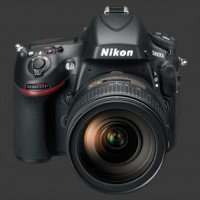
Nikon D800E and D800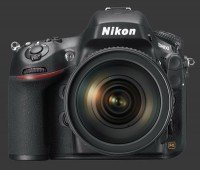
Nikon D800. Still, having fewer larger pixels on the D600 give it an advantage in terms of continuous shooting, dynamic-range and image-noise.
There is only one word of caution when moving up to a full-frame camera like the D600: lenses. To obtain top image quality, one needs high-end lenses and that means often spending about as much on a lens as on the camera. The Nikkor AF-S 24-70mm F/2.8 IF-ED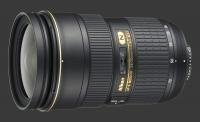
Nikkor AF-S 24-70mm F/2.8 IF-ED is certainly up to par but not the Nikkor AF-S 24-120mm F/3.5-5.6G IF-ED VR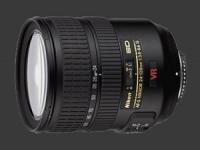
Nikkor AF-S 24-120mm F/3.5-5.6G IF-ED VR among general zooms.
![]() Neocamera detailed review Read the full Nikon D600 review here.
Neocamera detailed review Read the full Nikon D600 review here.
| PROS | CONS |
|---|---|
| Class-leading image noise | Under-exposure more frequent than usual |
| Class-leading dynamic-range | Light entering OVF skews metering |
| Good color-accuracy after tweaking | Increased softness at ISO 3200+ |
| Speedy autofocus | Strong anti-alias filter |
| Generally fast and responsive | EC button placement not ideal |
| Ultra-short black-out | Indistinct ISO button |
| Flexible self-timer and exposure delay | Poor Live-view, not Exposure-Priority |
| Very sharp LCD | Bizarre Auto ISO |
| Highly customizable with plenty of controls | Exposure Delay mode hidden in menu |
| Dual memory cards can provide instant backup | No 16:9 guidelines for time-lapse |
| Excellent build quality | Slow playback mode |
| Manual focus assist direction indicator | Only one level axis shown in OVF |
Recent Similar Cameras
Nikon D600 Nikon D600 Overview
The Nikon D600 is a 24 megapixels Full-Frame DSLR slotting itself below the D800 as the most affordable full-frame digital camera ever launched. As a full-frame model, it is designed to be a clear step above the D7000 to give access to unprecedented image quality for its price.
As one would expect for a high-end model, the D600 features full-manual controls including manual focus, custom white-balance and multiple metering patterns, plus dual control-dials, a 100% coverage viewfinder, RAW capability and a hot-shoe compatible with Nikon's Creative Lighting System. Like its modern peers, this DSLR offers live-view and full 1080p video capture.
The Nikon D600 goes significantly further with advanced video capabilities which include uncompressed HDMI output, audio input-levels (20 steps), audio output-levels (30 steps) and automatic creation of time-lapse video sequences. Yes, the D600 will produce a video up to 1080p from still frames automatically captured at defined intervals. This DSLR also has a DX video mode which shoots full 1080p HD video with a 1.5X crop factor which makes it usable with DX lenses but also works with FX ones.
At the heart of this new DSLR is a 24 megapixels sensor with a standard ISO sensitivity range of 100 - 6400, expandable to 50 - 25600, than can shoot continuous at 5.5 FPS for up to 100 JPEG images or an unspecified number of RAW files. This is accompanied by a reworked 39-point AF sensor with sensitivity for small apertures down to F/8. It also includes a Nikon 2016 pixels 3D Color Matrix metering system and EXPEED 3 processor.
Externally the D600 shows a large 100% coverage glass pentaprism viewfinder with 0.7X magnification and a 3.2" LCD with 920K pixels for comfortable viewing using either the optical viewfinder or Live-View. There are also front and rear infrared remote receptors and compatibility with a new battery-grip which can be powered by 8 AA batteries. Nikon also gave this camera a two-axis digital level and dual SDXC memory card slots.
Nikon D600 Nikon D600 HandsOn
Neocamera had a production Nikon D600 to try for a short period and get a feel for this new full-frame camera. The camera was uncalibrated and conditions were not controlled as we normally do in our full reviews. Still, we have crops from all ISO sensitivities and a small gallery of full-resolution images, plus this Hands On preview.

While Nikon is putting great emphasis on how affordable the D600 is compared to other full-frame DSLRs, this model looks and feels professional. It has a good heft with a deep grip and is covered with buttons and dials for efficient operation. Nikon users will be instantly familiar with the D600. Ergonomically, it is a cross between the D7000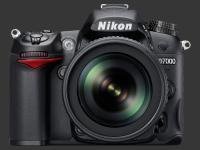
Nikon D7000 and D800, borrowing elements from each. The mode-dial, just like on the D7000, makes things explicit and is lockable to prevent accidental changes.
The large 100% coverage viewfinder is bright and crisp. With a press of a customized button, the viewfinder can show a dual-axis digital level - called Virtual Horizon - to keep the camera perfectly level independently along each axis. ISO is also shown below the optical view and is echoed on the top monochrome status panel. While there is a dedicated button at the rear to set ISO, a better way is to enable the Easy ISO option in the menu - just like on the D7000. This lets rear control-dial set ISO sensitivity in all modes except Manual (M). Both exposure and ISO steps can be set in 1/3 or 1/2 EVs. There is no option to only use full-stop sensitivities.
The D600 may be lighter than other full-frame cameras without an integrated vertical-grip but once a lens is attached, the difference is barely noticeable. It falls well in hand and important controls are all well-placed. Both control-dials are easy to reach without shifting your grip, making it every easy to control exposure-parameters with the camera at eye-level. The only common functions requiring two hands are WB, Focus-Point selection and Bracketing. Because both the exposure-mode and drive-mode dials have locks, it is easier to use both hands with them two.
Focus Point-Selection is accomplished using a lockable 8-way controller which is use to navigate menus as well. To change how focus point gets selected, the center of the focus lever at the front must be pressed while turning one of the control-dials.
In use the D600 is extremely responsive. It reacts to button presses instantly and rarely keeps the photographer waiting. The shutter-lag is very quick and there is a short-but-noticeable black-out time between shots. Entering Playback mode is also faster than usual, even when working with RAW data. Speaking of RAW, no converters are available for the D600 yet. Autofocus is quick too but slows down more than the Nikons that use a 51-point autofocus system. The autofocus engine in the D600 is designed to work with smaller aperture lenses, down to F/8, and is less sensitive to light by one full stop. It really only struggles at very low light-levels though.
After a preliminary look, image quality of the Nikon D600 DSLR is extremely promising. It produces clean and completely usable results up to ISO 1600 when noise starts to appear. At ISO 3200, color speckles start to eat up fine details but we expect mid-size prints to come out looking great. Intuitively, one should expect the D600 to actually beat its more expensive 36 megapixels sibling because of its larger pixels, at least in terms of dynamic-range and noise-levels. A final verdict requires extensive tests under controlled conditions which will be done as soon as we have a D600 for longer.
Nikon D600 Related Information
| Sister Models |
|---|
Nikon D800E Nikon D800E - 36 Megapixels, No Anti-Alias Filter, 4 FPS, 1/8000s Max shutter-speed |
Nikon D800 Nikon D800 - 36 Megapixels, 4 FPS, 1/8000s Max shutter-speed |
Nikon D700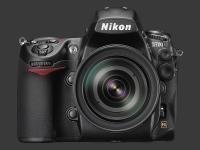 Nikon D700 - 12 Megapixels, 95% Coverage viewfinder, 1/8000s Max shutter-speed, No video |
| Reviews | |
|---|---|
| Neocamera | Photography Blog |
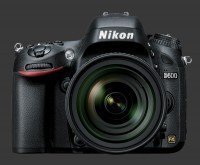 |
Please Support Neocamera
All information on Neocamera is provided free of charge yet running this website is a huge endeavor. Purchases made via affiliate links found throughout the site help keep it running and up-to-date. There is no additional cost to you, so please consider buying via these links to our affilates:
If you found any information on this site valuable and did not purchase via our affiliate links, please considering donating via PayPal:
Any amount will be greatly appreaciated. Thank you for your support!
Nikon D600 Highlights

Sensor-Size: 36 x 24mm

Actual size when viewed at 100 DPI
| 24 Megapixels DSLR | ISO 50-25600 |
| Nikon F Mount 1X FLM | Shutter 1/4000-30s |
| 100% Coverage Extra Large Viewfinder | Full manual controls, including Manual Focus |
| 2 Axis Digital Level | Custom white-balance with 2 axis fine-tuning |
| Weatherproof | Spot-Metering |
| Built-in Dust Reduction | Hot-Shoe |
| 5.5 FPS Drive, 57 Images | Stereo audio input |
| 1920x1080 @ 30 FPS Video Recording | Lithium-Ion Battery |
| 3.2" LCD 920K Pixels | Secure Digital Extended Capacity x 2 |
Updates
2024.11.18

Best 2024 Photography Gifts for Every Budget
Great gifts for photographers and photo enthusiasts selected for every budget among the best products of 2024.
2024.08.07

Eye Protection Tips for Professional Photographers
The four main considerations for professional photographers regarding eyewear.
2024.07.14

Fujifilm X100VI Review
Flagship fixed-lens compact digital camera with a 40 MP sensor and Image-Stabilization, a first for the series. Retro design featuring dual control-dials, plus direct ISO, Shutter-Speed and EC dials. Its hybrid viewfinder can switch between EVF and OVF mode.
2024.05.09

Fujifilm GFX100 II Review
Flagship 102 Megapixels Medium-Format Mirrorless Digital Camera with 8-Stop 5-Axis IBIS, 8 FPS Drive, 8K Video and 400 MP Super-Resolution capture in a weatherproof and freezeproof body with dual control-dials and dual memory-card slots.
2024.04.03

Fujifilm X-T5 Review
Newest Fujifilm flagship boasting a 40 MP APS-C sensor, 5-axis IBIS with 7-stop efficiency, 15 FPS continuous drive, 6.2K Video capture, dual control-dials and dual SDXC UHS-II slots in a sturdy weatherproof and freezeproof body.
2023.11.20

Best Digital Cameras of 2023
Find out which are the Best Digital Cameras of 2023. All the new Mirrorless Digital Cameras from entry-level to high-end professional.
2023.07.10

Fujifilm X-H2 Review
40 Megapixels APS-C Hybrid Mirrorless Digital Camera with 7-stop IBIS. Fastest shutter ever and 8K video capture. Large builtin EVF with 0.8X magnification and 5.8 MP, plus an Eye-Start Sensor. Packed with features and large number of controls in a weatherproof and freezeproof body.
2023.05.07

Sony FE 20-70mm F/4G Review
Review of the unique Sony FE 20-70mm F/4G lens. The optical zoom of this lens spans ultra-wide-angle and medium focal-length coverage, making it one of the most versatile Full-Frame lenses on the market.
2023.01.15

Huion Inspiroy Dial 2 Review
Review of the Huion Inspiroy Dial 2 tablet, a medium sized drawing surface with dual dials and customizable buttons. Connects via USB-C or Bluetooth 5.0 with Windows, Linux and Android support.
2022.12.08

How to Pack for a Photo Trip
Find out how to pack for a travel photography trip, carry your gear safely while meeting airline regulations.
2022.11.13

Best Digital Cameras of 2022
The best digital cameras of 2022. A short list of the most outstanding models in their respective categories. Choose one for yourself or as a gift.
2022.09.21

Pentax DA* 60-250mm F/4 SDM Review
Review of the Pentax DA* 60-250mm F/4 SDM, the constant-aperture telephoto zoom with the highest zoom-ratio on the market.















